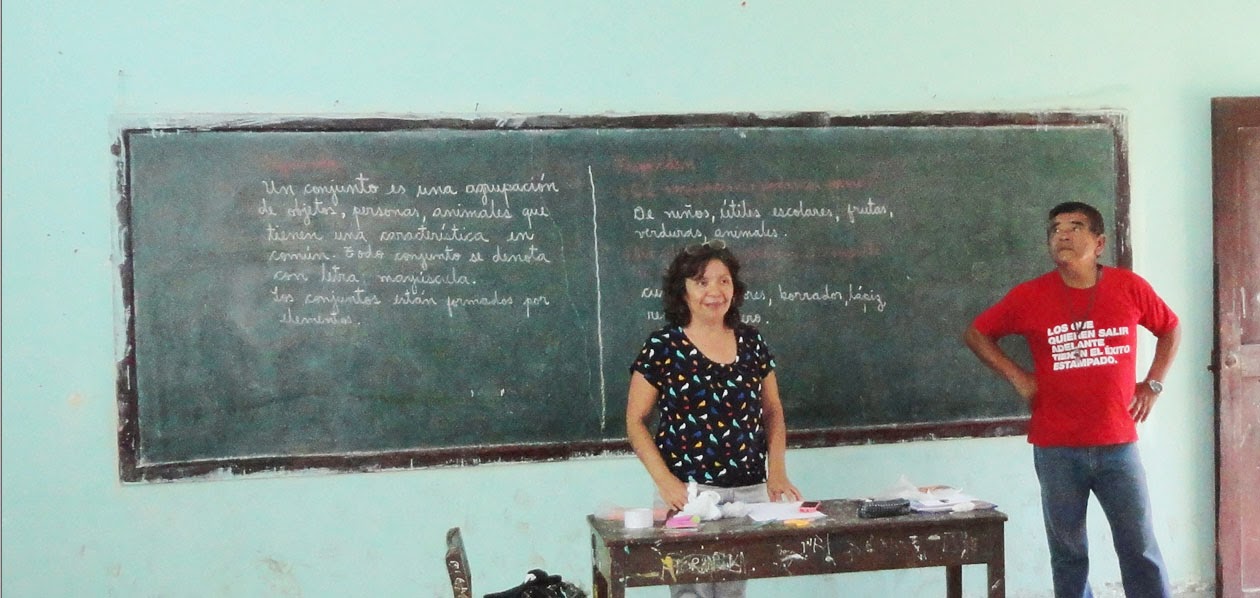Locally whiteboards are referred to as “pizarra
acrilicos “, and nearly every school and pronoei we visit asks for them.
The older schools in remote desert villages
were equipped with essentially two types of ‘chalkboards’. The most basic and
least expensive was simply an area on the wall of raised, smoothed and painted plaster
outlined with a wood frame. This type of chalkboard dates back to the mid
1800s. The purpose of the wood was to hold thumb tacks and to attach a shelf
for chalk and erasers. When cracks or pitting developed, all that was necessary
was to add another coat of plaster and paint. The primary school in Conchucos
has plaster chalkboards. It’s been a few years since they’ve been refreshed but
based on the readability of the writing they seem to be serving their basic
purpose quite well.
The second type of chalkboard is the more
familiar one constructed of fiberboard. This too is an old technology, dating
to the late 1800s. Most of the schools we visit have fiberboard chalkboards.
And most of them are decomposing and pitted and no longer serviceable, like
this one we replaced with a whiteboard in the village of Casa de Madera. I do
not know about the availability of new fiberboard chalkboards in the Lambayeque
Region. Based on the number of whiteboard manufacturers in Chiclayo, my guess
is fiberboard availability is limited.
From a basic need prospective, plaster and
fiberboard (if available) are probably the more practical options. Plaster and
paint is cheap. Colored chalk is cheap and available everywhere. There are no
environmental issues that I know of with those options, though some teachers
have complained about chalk dust (that reminded me of my days as an ‘eraser
monitor’ which means I had the privilege of taking erasers outside at the end
of the day and banging them together to remove the dust). Whiteboard markers
are plastic, more expensive and the aroma is pungent. So if the old technology
is less expensive, less complicated, serves essentially the same purpose and is
perhaps more environmentally friendly, why do school directors want
whiteboards?
Part of the answer to that question is that school directors and teachers naturally want the most modern teaching aids available in their classroom, and in remote villages the relatively new whiteboards are considered state-of-the-art. Another reason can be found in Chiclayo classrooms.
Some classrooms in a few of
Chiclayo’s newer and remodeled schools have electronic interactive whiteboards.
Directors and teachers from the small village schools occasionally attend
conferences in Chiclayo schools. They see these electronic marvels in use. They
hear about the learning advantages for students. Perhaps they know a teacher who is lucky enough to
have one. And they dream that maybe someday they will have one in their
classroom. But until that day comes, to them a “pizarra acrilico“ is a step up and the next closest
thing.
* * *
My
thanks to Amy for prompting this post



No comments:
Post a Comment